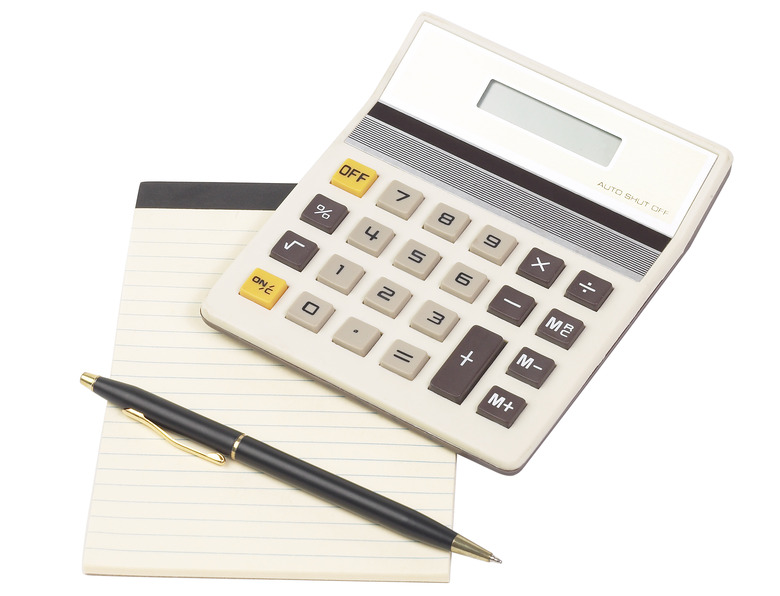How To Convert Ppm To Ug/Cubic Meter
PPM stands for "parts per million." Ug stands for micrograms. A microgram equals a millionth of a gram. Parts per million is a different kind of density measure, comparing one type of molecule to the count of all the molecules in the same volume. The distinction between the two density measures can be illustrated with a conversion of the carbon dioxide density from one unit of density measurement to the other. Note that the conversion is not a simple matter of multiplying by one factor. The conversion is instead temperature- and pressure-dependent.
Step 1
Suppose measurements of CO2 taken at a certain spot give a reading of 380 PPM.
Step 2
Suppose also that the place where the reading was taken is at standard pressure and temperature (SPT). SPT is 0 degrees Celsius (or 273 degrees Kelvin) and 1 atmosphere (atm) of gas pressure. An atmosphere of pressure equals about 14.8 pounds per square inch (PSI), the atmospheric pressure at sea level (more or less).
Step 3
Determine what the molar count is in, say, a liter of air at this measurement spot, making the reasonable assumption that the gas behaves like an ideal gas. This assumption allows you to use the ideal gas equation, PV=nRT. For the uninitiated, P stands for pressure, V for volume, n for the number of moles (mol; a unit for counting molecules), and R is a proportionality constant. T is for absolute temperature, and therefore measured in degrees Kelvin (K). If P is in atmospheres (atm) and V is in liters (L), then R equals 0.08206 L_atm/K_mol.
Continuing with the example above, PV=nRT becomes 1 atm_1 L = n(0.08206 L_atm/K*mol) 273K. The units cancel out to give n=0.04464 moles.
Step 4
Apply Avagadro's number to the molar count to find the number of molecules of air in the volume of interest. Avagadro's number is, in scientific notation, 6.022x10^23 molecules per mole, where the caret ^ refers to exponentiation.
Continuing with the CO2 example, n=0.04464 moles refers to 0.04464x6.022x10^23 = 2.688x10^22 molecules.
Step 5
Multiply the molecular count by the PPM proportion that is CO2.
380 PPM means 0.0380% of the molecules in the volume are CO2. (Just divide 380 by a million to get the proportion.) 0.0380%x2.688x10^22 equals 1.02x10^19 molecules of CO2.
Step 6
Convert the number of CO2 molecules into the number of moles, by dividing by Avagadro's number.
Continuing with the example, 1.02x10^19/6.022x10^23 = 1.69x10^-5 moles of CO2 in a liter of air.
Step 7
Convert the number of moles into grams.
Continuing with the CO2 example, the molar weight of CO2 is the sum of the molar weight of monatomic carbon plus twice the molar weight of monatomic oxygen, which are 12.0 and 16.0 grams per mole respectively (which you can find on most any periodic chart). So CO2 has a molar weight of 44.0 g/mol. So 1.69x10^-5 moles of CO2 equals 7.45x10^-4 grams.
Step 8
Divide by the volume you specified earlier, converted into units of cubic meters.
Continuing with the CO2 example, the volume was specified as 1 liter back in step 3. So you have 7.45x10^-4 grams per liter. That's 0.000745 g/L, or 745 ug per liter (found just by multiplying the 0.000745 by a million). There are a thousand liters per cubic meter. So the density becomes 745,000 ug per meter-cubed. This is your final answer.
Things Needed
- Calculator
- Chart of molar masses
TL;DR (Too Long; Didn't Read)
In sum, the calculations were PPM x [P/(T*R)] x molar weight x 1000. (V was set equal to 1, without loss of generality.)
Warning
Be careful when doing your own calculations that there were assumptions about pressure and temperature made at the start of these calculations that may not apply to your situation.
References
- Chemistry; Raymond Chang; 1985
Cite This Article
MLA
Dohrman, Paul. "How To Convert Ppm To Ug/Cubic Meter" sciencing.com, https://www.sciencing.com/convert-ppm-ugcubic-meter-5852000/. 24 April 2017.
APA
Dohrman, Paul. (2017, April 24). How To Convert Ppm To Ug/Cubic Meter. sciencing.com. Retrieved from https://www.sciencing.com/convert-ppm-ugcubic-meter-5852000/
Chicago
Dohrman, Paul. How To Convert Ppm To Ug/Cubic Meter last modified August 30, 2022. https://www.sciencing.com/convert-ppm-ugcubic-meter-5852000/
